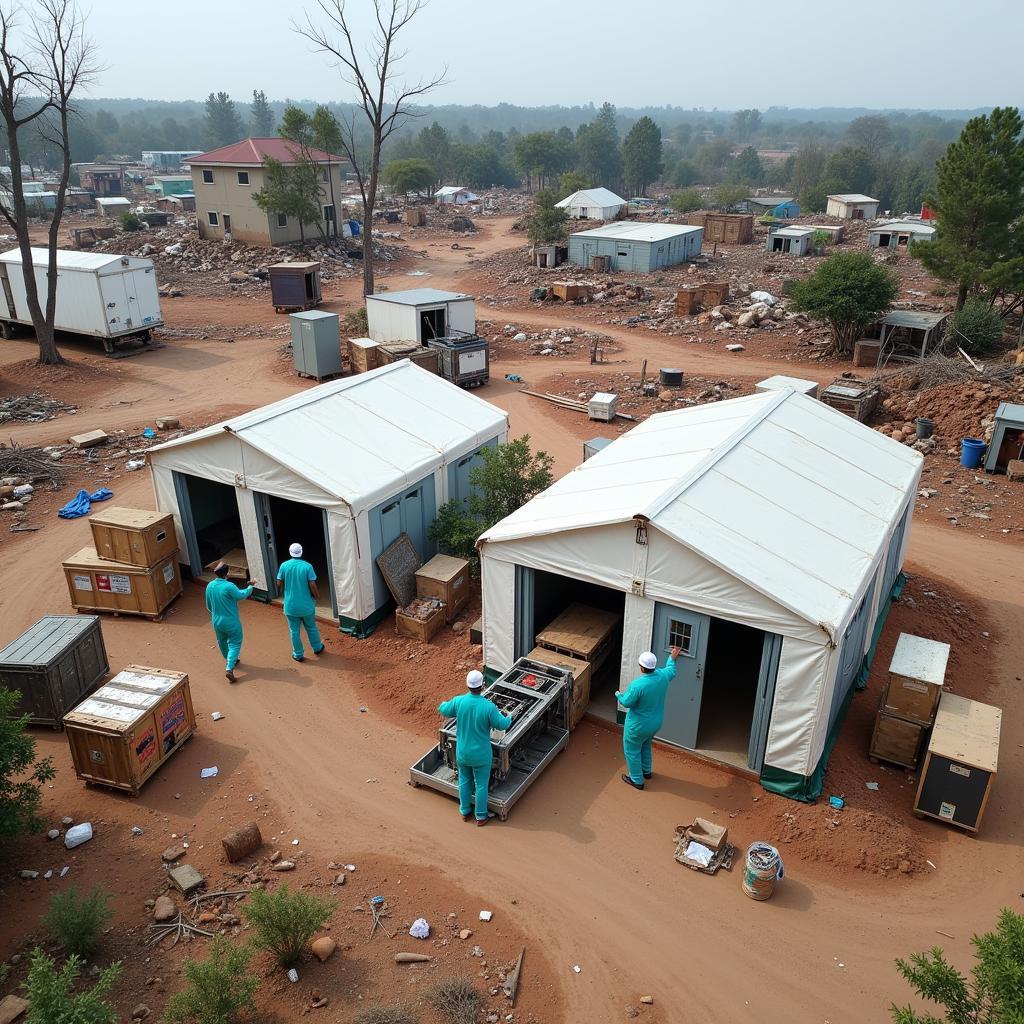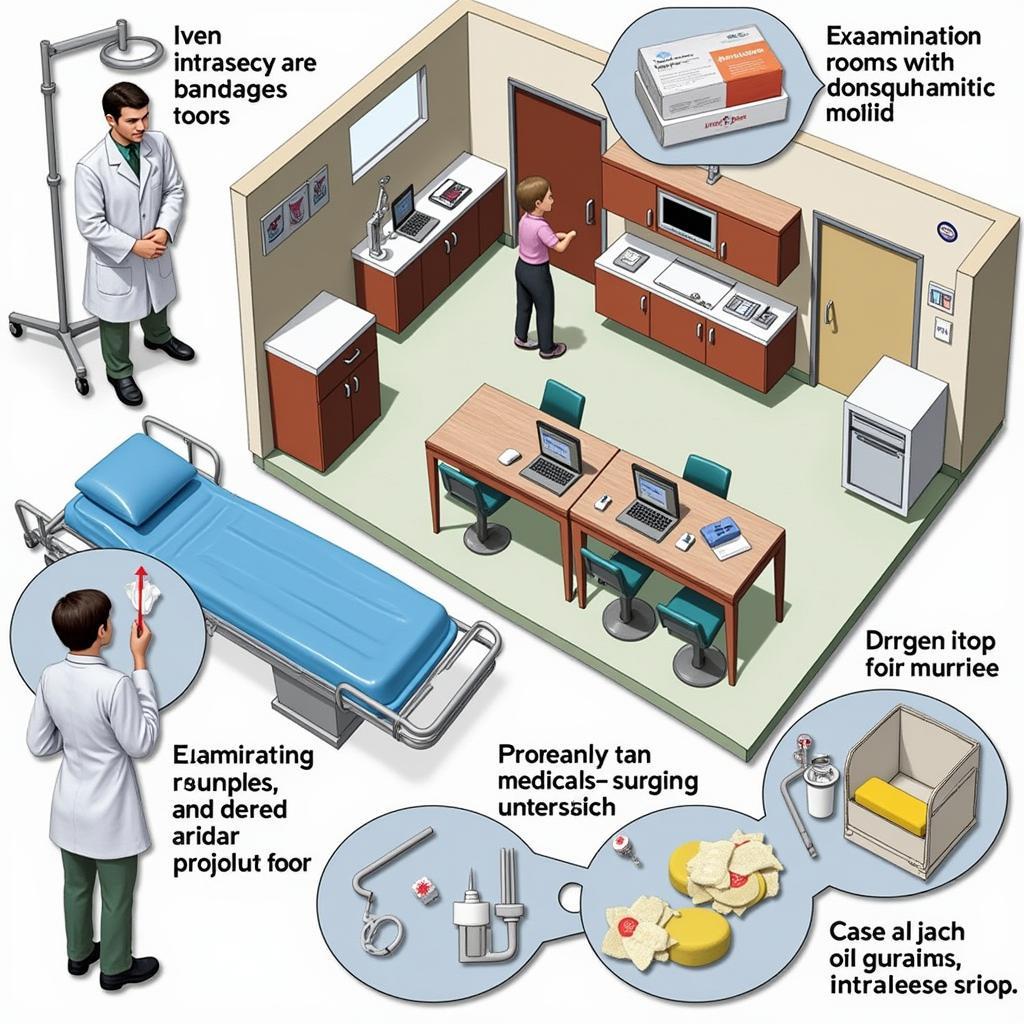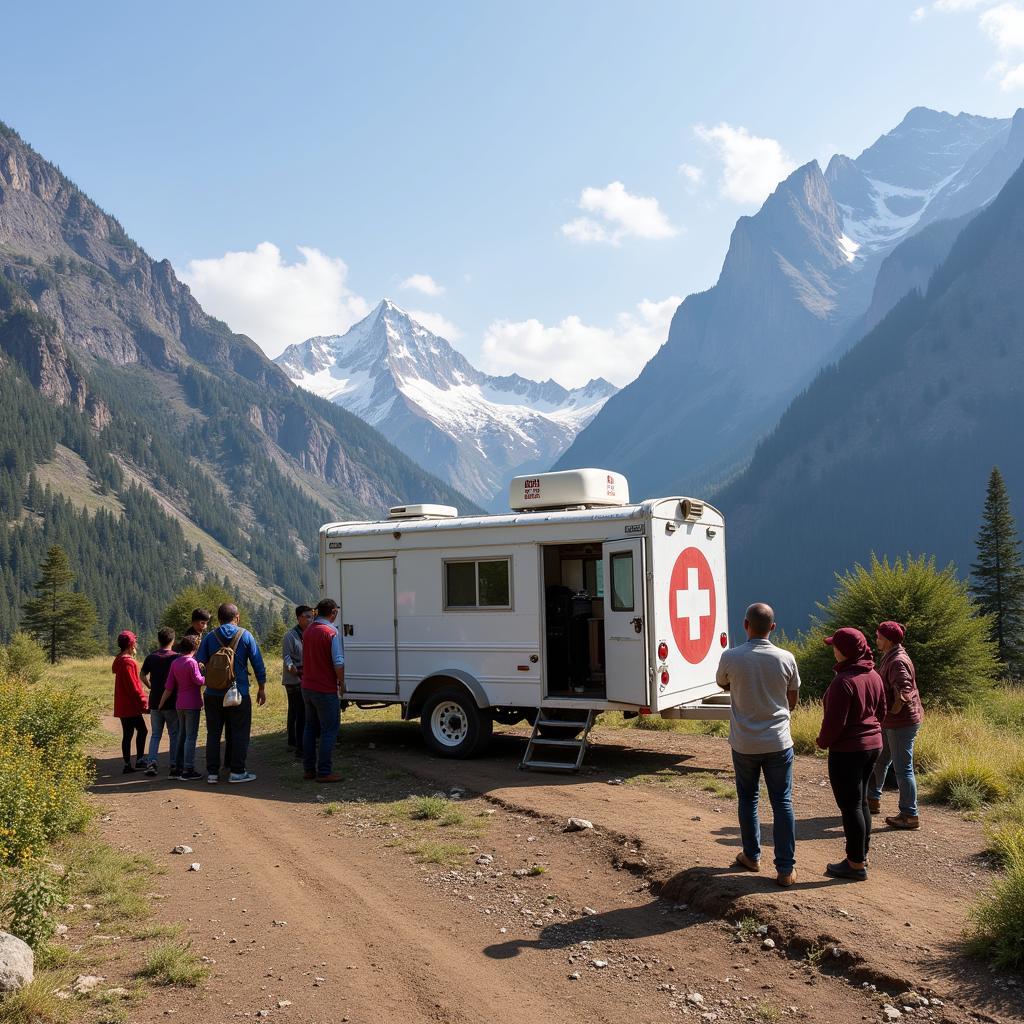A Kit Hospital is a rapidly deployable medical facility designed to provide essential healthcare services in emergency situations. From natural disasters to humanitarian crises, understanding the components and benefits of a kit hospital can be crucial for both healthcare professionals and those seeking aid. This article will delve into the various aspects of kit hospitals, exploring their functionality, benefits, and critical role in delivering timely medical care.
What Makes a Kit Hospital Effective?
Kit hospitals offer a flexible and efficient solution for providing medical care in challenging environments. They are pre-packaged and designed for rapid deployment, ensuring timely assistance to affected populations. One of the key advantages of a kit hospital is its adaptability. These facilities can be tailored to meet the specific needs of a situation, whether it’s providing basic primary care or more specialized services like surgery. Having access to a facility like a hospital kitchen is paramount for patient care. Learn more about hospital kitchen employment at our dedicated page.
A well-equipped kit hospital includes essential medical equipment, supplies, and often, pre-fabricated structures to house the facility. This allows for the quick establishment of a functional medical center, even in areas lacking existing infrastructure.
 Kit Hospital Deployment in Disaster Zone
Kit Hospital Deployment in Disaster Zone
Key Components of a Kit Hospital
The core components of a kit hospital vary depending on the intended purpose and scale of operation. However, most kit hospitals include basic modules for triage, examination, treatment, and minor surgery. Essential medical equipment, such as sterilizers, diagnostic tools, and basic surgical instruments, are also included. Supplies like medications, bandages, and intravenous fluids are pre-packaged and ready for use. Beyond the basics, some kit hospitals offer specialized modules for areas like maternity care, infectious disease treatment, or even intensive care.
The modularity of a kit hospital allows for flexibility in its configuration, ensuring that it can be tailored to the specific needs of the situation. For instance, a kit hospital deployed in response to an earthquake might prioritize orthopedic care, while one deployed during a disease outbreak would focus on infection control. You can learn more about specialized hospital kits, such as oral care kits, by visiting our hospital oral care kits page.
 Essential Components Inside a Kit Hospital
Essential Components Inside a Kit Hospital
Benefits of Kit Hospitals in Disaster Relief
Kit hospitals play a vital role in disaster relief efforts, offering several crucial benefits:
- Rapid Deployment: Kit hospitals can be quickly transported and set up, allowing for timely medical intervention in disaster-stricken areas.
- Scalability and Adaptability: They can be scaled up or down to accommodate the needs of the affected population and adapted to address specific medical requirements.
- Self-Sufficiency: Many kit hospitals are designed to be self-sufficient, with their own power supply and water purification systems.
- Improved Access to Care: They bring essential medical services directly to those in need, bypassing logistical challenges.
How Kit Hospitals Enhance Healthcare Access
Beyond disaster relief, kit hospitals can improve healthcare access in underserved communities. They can be deployed to remote or resource-limited areas, providing essential medical services to populations lacking access to traditional healthcare facilities. This can be particularly valuable in developing countries or regions with limited infrastructure. Learn more about resources available in specific regions, like St. Kitts, by visiting our page on St Kitts hospital.
 Kit Hospital Deployed in Remote Area
Kit Hospital Deployed in Remote Area
The Future of Kit Hospitals
The design and functionality of kit hospitals are constantly evolving. Advancements in medical technology, materials science, and logistics are driving innovation in the field. Future kit hospitals may incorporate telemedicine capabilities, allowing remote specialists to consult with on-site medical staff. They might also utilize more sustainable energy sources and advanced water purification systems to minimize environmental impact. The ongoing development of kit hospitals ensures that they remain a valuable resource for providing critical medical care in challenging environments. Looking for more information on the integral part of a hospital? Check our resource on the hospital kitchen.
Conclusion
Kit hospitals are a crucial element in providing rapid and effective healthcare in emergency situations. Their flexibility, scalability, and self-sufficiency make them invaluable in disaster relief, humanitarian aid, and improving healthcare access in underserved communities. As technology continues to advance, the future of kit hospitals holds even greater potential for delivering quality medical care where it’s needed most. The importance of kit hospitals in providing essential medical services in challenging circumstances cannot be overstated. For job opportunities related to hospital kitchens, check out our page on mercy hospital kitchen jobs.
FAQ
- What is the typical setup time for a kit hospital?
- What are the power requirements for a kit hospital?
- How are kit hospitals transported to remote locations?
- What types of medical professionals staff a kit hospital?
- How are kit hospitals maintained and resupplied?
- What are the costs associated with deploying a kit hospital?
- How can I donate to or volunteer with a kit hospital organization?
When you need assistance, please contact us by Phone: 02437655121, Email: [email protected] or visit us at: No. 298 Cau Dien Street, Minh Khai, Bac Tu Liem, Hanoi, Vietnam. We have a 24/7 customer service team.